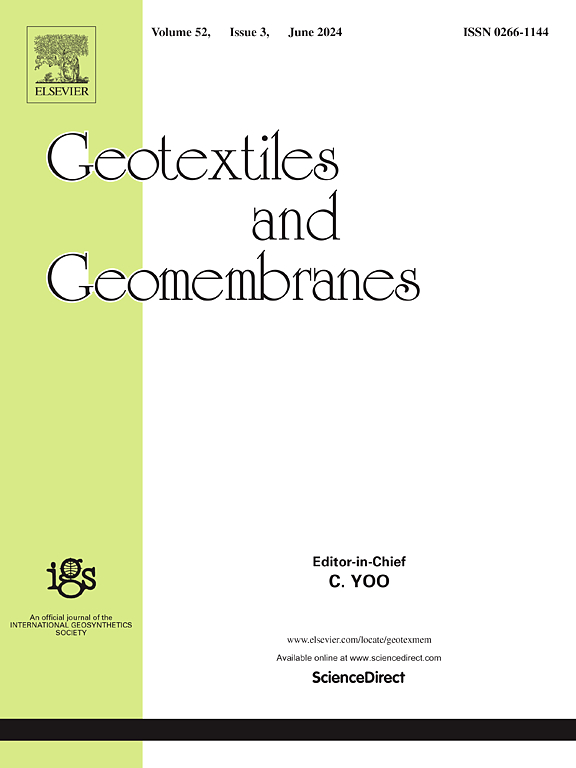土工格栅稳定效果——弯曲单元传感器技术多尺度试验综合评价
IF 6.2
1区 工程技术
Q1 ENGINEERING, GEOLOGICAL
引用次数: 0
摘要
土工格栅通常用于路面结构,以机械稳定松散的骨料层,以提高结构性能和延长使用寿命。土工格栅通过诸如联锁和摩擦等机制来抑制聚合粒子的横向运动,从而稳定聚合粒子。本文采用弯曲单元(BE)传感器技术对不同孔径形状和性能的挤压和焊接土工格栅进行了多尺度试验研究,通过量化模量增强来研究土工格栅的稳定效果。该研究对土工格栅稳定聚集体进行了研究,包括在大型试验台上安装了三个嵌入式BE现场传感器,以及在重复加载三轴装置中安装了土工格栅,并在土工格栅上方嵌入了BE传感器对。大型测试平台允许在一系列加载和卸载阶段进行侧压力测量。当使用相同的密级集料进行测试时,从两个实验中确定的剪切波测量的小应变模量量化了土工格栅的加筋区。与对照测试结果相比,所有四个土工格栅在两个测试设置中都显示出模量增强。观察到土工格栅力学稳定影响区最大可达6 in。(15厘米)以上一个挤压土工格栅。这种量化的模量增强和影响区域对于将土工格栅纳入力学-经验(M-E)路面设计框架至关重要。本文章由计算机程序翻译,如有差异,请以英文原文为准。
Geogrid stabilization effectiveness – Comprehensive assessment through multiscale experiments with bender element sensor technology
Geogrids are commonly used in pavement structures to mechanically stabilize unbound aggregate layers to improve structural performance and extend lifespan. Geogrids stabilize aggregate particles by restraining their lateral movements through mechanisms such as interlocking and friction. This paper presents a multiscale experimental study conducted on extruded and welded geogrids, having different aperture shapes and properties, for their stabilization effectiveness through quantifying modulus enhancement using the bender element (BE) sensor technology. The study examines geogrid-stabilized aggregates both in a large-scale testbed with three embedded BE field sensors and in a repeated load triaxial device with geogrid coupons installed at midheight and embedded BE sensor pairs above geogrids. The large-scale testbed allowed lateral pressure measurements under a series of loading and unloading stages. Small strain moduli from the shear wave measurements determined from both experiments quantified geogrid stiffened zones when tested with the same dense-graded aggregates. All four geogrids showed modulus enhancements in both test setups when compared to control test results. The geogrid mechanical stabilization influence zone was observed to be as large as 6 in. (15 cm) above one extruded geogrid. Such quantified modulus enhancements and influence zones are essential for incorporating geogrid into mechanistic-empirical (M-E) pavement design framework.
求助全文
通过发布文献求助,成功后即可免费获取论文全文。
去求助
来源期刊

Geotextiles and Geomembranes
地学-地球科学综合
CiteScore
9.50
自引率
21.20%
发文量
111
审稿时长
59 days
期刊介绍:
The range of products and their applications has expanded rapidly over the last decade with geotextiles and geomembranes being specified world wide. This rapid growth is paralleled by a virtual explosion of technology. Current reference books and even manufacturers' sponsored publications tend to date very quickly and the need for a vehicle to bring together and discuss the growing body of technology now available has become evident.
Geotextiles and Geomembranes fills this need and provides a forum for the dissemination of information amongst research workers, designers, users and manufacturers. By providing a growing fund of information the journal increases general awareness, prompts further research and assists in the establishment of international codes and regulations.
 求助内容:
求助内容: 应助结果提醒方式:
应助结果提醒方式:


